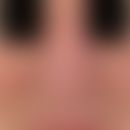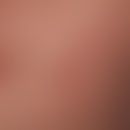DefinitionThis section has been translated automatically.
CO2 molecule gas laser. The active medium is theCO2 molecule; usually a wavelength in the infrared range of 10,600 nm is used. With the focused beam (diameter approx. 0.2 mm) and a high power density, the skin or other tissues can be sharply separated, with little thermal damage to the surrounding area. In the defocused laser beam (diameter 2-3 mm) superficial areas of the skin can be ablated.CO2 lasers are used in cw mode or pulsed mode.
General informationThis section has been translated automatically.
- Cw method: Infrared light of wavelength 10,600 nm, strong absorption in tissue water, no penetration into the depth. With focused beam (diameter about 0.2 mm) tissue separation, with defocused beam (diameter 2-3 mm) ablation of superficial skin areas. The strong absorption of the radiation prevents penetration into deeper skin layers. This enables targeted superficial vaporization. InCO2 continuous laser treatment, a highly focused beam is guided over the skin by means of mechanical or optoelectronic scanners. The very short exposure time in combination with the high power density results in an effect similar to that of pulsedCO2 lasers.
- Pulsed method: infrared light of wavelength 10,600 nm, see above. Use of very short, high-energy light flashes between 0.06 and 1 ms. This results in sharp ablation of the tissue with minimal tissue necrosis (coagulation necrosis). Optoelectronic scanners are available for most devices. Depending on the thickness of the lesions to be treated and the energy set, up to 4 treatments of the same area can be performed. Therefore, bloodless working and controlled ablation density are advantageous over conventional (mechanical) dermabrasion, e.g. in problem localizations such as eyelids, perioral area, neck, back of hands, etc.
- Surface anesthesia with local anesthetics such as EMLA cream or infiltration anesthesia are mandatory. Antiseptic dressings can be applied after treatment. Wound healing over 1 week.
- Light protection: After completion of laser treatment, light protection (sunscreen) should be applied for 6-8 weeks, see below. Light protection products.
IndicationThis section has been translated automatically.
Especially non-vascular changes such as rhinophyma, viral papillomas, leukoplakia, tattoos (however, scar-free removal is not possible).
Undesirable effectsThis section has been translated automatically.
- cw mode: hypotrophic scars, keloids, hypertrophic scars, hypopigmentation, infections, wound healing disorders may occur.
- Pulsed mode: hypertrophic scars, keloids, temporary or permanent hypopigmentation ( alabaster skin ) may occur.



